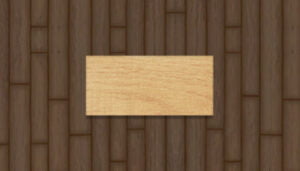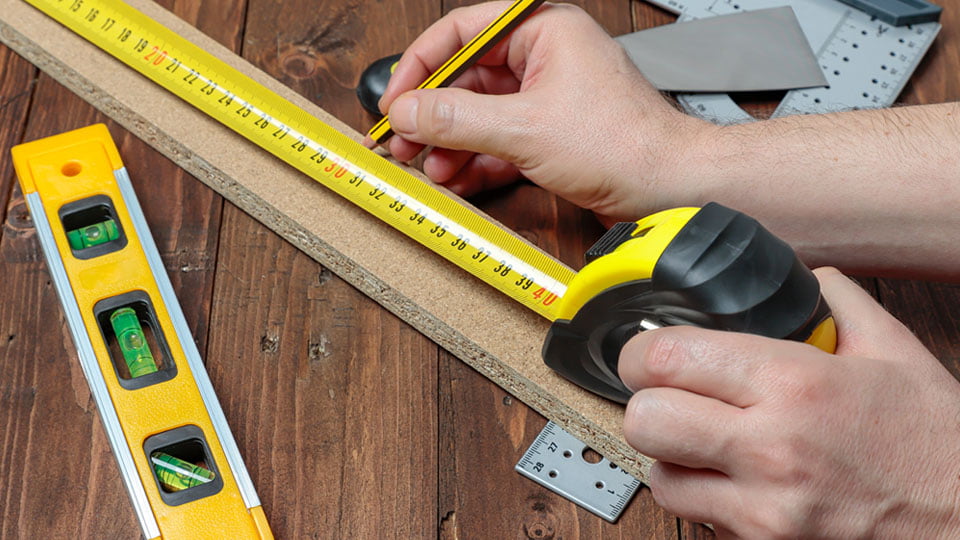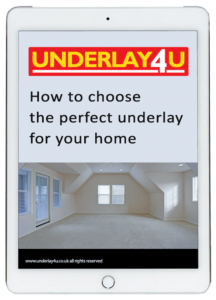If you plan to lay vinyl, sheet vinyl, laminate or even carpet in your rooms, then any uneven floorboards will most likely show through. If you have this problem, you may wish to know how to level a wooden floor for any of these materials.
It’s hugely important to have a good, level subfloor when adding a new decorative floor.
Covering old floorboards with new hardboard sheets will provide you with a much more even surface. In this article, we’re looking at step by step how to fit hardboard sheets to level a wooden floor so that your sub floor is ready for your laminate.
What condition is your existing floor in?
You might be at a good starting point where all the current floorboards are in good shape. Or you may need to lift some of the floorboards beforehand
However, rotten floor boards need to be replaced.
Now is also the best time to fix and loose, squeaky or creaking floor boards. They need to be screwed down before laying the new floor.
Always use screws to fix the floor boards, don’t use nails. That way you will massively reduce creaking noises when the new flooring is in place.
Check for pipes and cables & make repairs
Before adding screws to the current boards, you need to make sure you’re not screwing into any pipes or cables. If you do, you risk the cost of the work increasing significantly.
Use a pipe or cable detector to make sure there’s nothing there as any pipes could be the actual reason that the boards weren’t fixed when any previous work was carried out.
As a final touch, check for any nails or screw heads that are sticking up above the surface. Any you find, punch them with a hammer and nail punch so they go below the surface and stay there.
Smooth down uneven areas
If the old floorboards look like they can be smoothed out with a light sand, then it’s a good idea to use a belt sander or an orbital sander to do so.
Remember to wear gloves, goggles and a mask when sanding on the floorboards. As a final touch, maybe use a smoothing plane or powered planer before this double check for nail and screw heads so they don’t damage the blade
Choose your boards
If you have any moisture, you may wish to use WBP (weather boilproof) plywood instead of hardboard
use 3mm thick hardboard. If you can use larger sized sheets as they will give a benefit of less joins in the sheets but are bulkier to transport and work with.
Smaller sizes are easier to transport and work with even more so if you need to collect the materials from your local hardware store – but there will be more joints in the.
Make a note of the length and width of the boards so that you can work out exactly how many you need.
Calculate how much hardboard levelling you’ll need
Now it’s time to get your maths head on.
1. Measure the room
You need to work out the length, width and total square meterage of the room. Use a tape measure to measure both the width and the length.
Then, multiply each of those together to give you the square meterage.
2. Identify the size of sheets you will use
Once you’ve decided which sheets you need, choose the size of boards that suits you best based on your size room, transportation needs (i.e. do you need to put them in your car and bring them home from the DIY Store, and ease of working with.
For example a 1.2m x 2.4m board will give you 2.88 m2 of board for each sheet to work with.
3. Divide the size of the room by the size of the hardboard sheets
Now you know the size of the room AND the size of the boards, it’s time to work out how many you need. Purchase an extra sheet or two so you don’t run out and need to make an extra trip to the store.
For example,
If your room measures 4m x 5m, that’s a total of 20m2.
If you divide 20m2 (room size) by 2.88m2 (board size), you get 6.94 or 7 boards in total.
If you add one or 2 boards as excess, you will need 8 or 9 boards in total.
Condition your hardboard sheets before laying
Now you’ve got hold of your boards, you’re going to want to condition them to the room before laying. Here’s how
Firstly, scrub water into the rough side of each sheet. Then lay the sheets flat, in the room which they will be laid, for a minimum of 24 hours. This helps them acclimatise to the new environment.
Wetting the sheets causes the boards to expand and then contract when they have dried again – it prevents uneven bumps and joints forming due to expansion after they have been put firmly into position on the floor.
Start laying the floorboards
Use 20mm length stainless steel nails to fix the sheeting in place.
Start in the centre of the room at a right-angle to the existing floorboards. (because the walls may not be perfectly square).

Measure the room to find the centre and start your first levelling board at this point.
Position the first sheet so that it’s long side is at a right angle to the existing floorboards. Lay it across the floorboards
Starting in the centre-bottom of the sheet, nail the floorboards down with spaces of 150mm between each nail. Hammer nails in all directions (up, down, left and right) covering the whole board.
Leave approximately 1.5cm from the edge (15mm).
When fitting the next set of boards around the one in the centre of the room, stagger the joints of the other boards with the first board you fixed to the floor.
Try to make sure there’s an overlap of at least 1 quarter of the sheet
Fitting boards around objects
Sometimes there will be objects in the room that you just can’t move. In this instance, you’ll need to place the levelling boards around the outside of the object.
Start by making a template of the obstacle, then mark the board with a pencil so you know exactly where to cut the board.
As you reach the side of the room, you’ll need to make sure you fit any strips of levelling board into the gaps by the walls to make sure the whole floor is covered.
When you have your whole floor covered, you’re now ready to fit your new floor
Install your Laminate underlay
Now you have your floor levelled, it’s time to get your laminate underlay installed. This can help give the floor that completeness so you really get a level floor with the finished floor.
A final thought
Remember though, by adding a layer of board to your room, you have now made the floor that slightly bit higher.
So, you’ll either need to trim the old door at the entrance to the room or if you’re having a new door fitted, be sure to take this extra height into account when measuring the gap.
Especially if the door opens inwards to the room.
Achieving a level subfloor is paramount when preparing for the installation of vinyl, sheet vinyl, laminate, or carpet in your rooms. The process to level a wooden floor, particularly through the use of hardboard sheets, ensures a smooth and even surface that enhances the longevity and aesthetic appeal of your new flooring.
Assessing the existing floor condition is crucial, with a focus on addressing any issues such as rotting or squeaky floorboards before laying the new material. The careful consideration of screws over nails during the fixing process minimises potential creaking noises. Additionally, thorough checks for pipes and cables, along with the proper use of detectors, prevent inadvertent damage during installation.
Choosing the right type and size of hardboard sheets, coupled with precise calculations, streamlines the process and reduces waste. Conditioning the sheets before laying, along with meticulous planning for fitting around obstacles, ensures a seamless and professional outcome.
As a final touch, the installation of laminate underlay complements the levelled floor, providing a comprehensive solution for a polished finish. However, it’s crucial to remember that adding a layer may impact door clearances, necessitating adjustments for a harmonious transition.
In mastering the art of levelling wooden floors, this guide equips you with the knowledge and steps needed to create a stable foundation for your chosen floor covering, ensuring both functionality and visual appeal in your living spaces.




